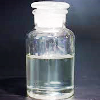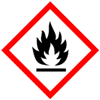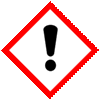Diacetone alcohol or 4-Hydroxy-4-methylpentan-2-one or 4-Hydroxy-4-methyl-2-pentanone Manufacturers, with SDS GHS MSDS Sheet |
Supplier, Manufacturer, Exporter of Diacetone alcohol or 4-Hydroxy-4-methylpentan-2-one or 4-Hydroxy-4-methyl-2-pentanone, Muby Chemicals of Mubychem Group, established in 1976, is the original manufacturers of Specialty Chemicals, Pharmaceutical Excipient, Fragrance Food & Flavor chemicals, Reagent Grade Chemicals, Shale Gas Fracturing Chemicals in India. Mubychem Group has several manufacturing facilities spread across Western India and world wide contacts and toll manufacturers. We are exporting globally to countries like USA, Canada, Europe, UAE, South Africa, Tanzania, Kenya, Egypt, Nigeria, Cameroon, Uganda, Turkey, Mexico, Brazil, Chile, Argentina, Dubai, Korea, Vietnam, Thailand, Malaysia, Indonesia, Australia, China, Germany, France, Italy Portugal, Bangladesh, etc. The products are offered as per required specifications and in correct shape and size in mm or meshs or microns as specified by the buyer. The participating units have one or more accreditations like FDA - cGMP and GLP approval, ISO-9001 Certified, "REACH" Registered, ISO-14001, ISO/IEC 17025, ISO-22000, FSSC 22000, ISO 45001, Kosher Certified, Halal Certified, HACCP, FSSAI. We offer Commercial Pure & IP BP EP Ph Eur USP NF JP FCC Food Grade Analytical Reagent Grades of Chemicals |
| Bookmark this Web Site -- or -- Email This Page Info to a Colleague or Yourself |
Search our website here:







Diacetone alcohol or 4-Hydroxy-4-methylpentan-2-one or 4-Hydroxy-4-methyl-2-pentanone: CAS Number: 123-42-2, EINECS EC Number: 204-626-7, Molecular Formula: (CH3)2C(OH)CH2COCH3 or C6H12O2, Molecular Weight: 116.16, HS Code ---**
How big is your requirement or how small
We serve it all.
Specifications, Safety Data Sheet, Manufacturing process details, Wholesale retail buy sell prices, Uses etc available on line in these pages for Diacetone alcohol or 4-Hydroxy-4-methylpentan-2-one or 4-Hydroxy-4-methyl-2-pentanone.
For SDS MSDS Sheet Click
SDS MSDS Sheet of Diacetone alcohol or 4-Hydroxy-4-methylpentan-2-one or 4-Hydroxy-4-methyl-2-pentanone Manufacturers
Diacetone alcohol
4-Hydroxy-4-methylpentan-2-one or 4-Hydroxy-4-methyl-2-pentanone Pure Suppliers

Diacetone alcohol or DAA or 4-Hydroxy-4-methylpentan-2-one or 4-Hydroxy-4-methyl-2-pentanone is an oxygenated solvent derived from acetone which has two alcohol and ketone functions. It is colorless and odorless and has a low evaporation rate. Diacetone alcohol is mainly used in paints and coatings. It is a good solvent for organic peroxides. It can also be used for the treatment of textiles and leather, in chemical synthesis or as a cleaning solvent.
Properties and Specifications of Diacetone Alcohol or 4-Hydroxy-4-methylpentan-2-one or 4-Hydroxy-4-methyl-2-pentanone:
Appearance: Colorless liquid free from suspended impurities.
Odor: Odorless to mild odor.
Relative density: 0.937C to 0.949C.
Melting point: -47C.
Boiling point: 166C to 168C.
Flash point (closed cup) : 61C.
Auto-ignition Temperature: 640C.
Solubility: Miscible in water. Soluble in most organic solvents.
Purity: 99.5% minimum.
Non-volatile matter: 0.005% maximum.
Moisture: 0.1% maximum.
We also manufacture and supply as under:
Manufacturers:
MUBY CHEMICALS
Ambernath Mumbai, Ankleshwar Gujarat, India
TEL: (OFFICE) +912223770100, +912223726950
Current Date Time in India GMT+5:30
e-mail: info@mubychem.com
USA, Canada, Mexico and other American neighbouring buyers may
e-mail: us@mubychem.com
Call toll-free 1-877-682-9243 (1-877-MUBYCHEM)

Copyright and Usual Disclaimer is Applicable.
Last 25 November, 2025




Exporters to USA Canada UAE Europe South Africa Tanzania Kenya Uganda Egypt Nigeria Turkey Mexico Brazil Argentina Chile Dubai etc.
Global or International Suppliers, Exporters, Importers, Manufacturers
I shall pass through this world, but once. If therefore, there is any good that I can do, or if there is any favor that I can show to a fellow human being, let me do it now. Let me not defer or neglect it. For I shall not tread this way again
Diacetone alcohol or 4-Hydroxy-4-methyl-2-pentanone SDS, Safety Data Sheet
MSDS Sheet, Material Safety Data Sheet 14-Oct-20
1. PRODUCT AND COMPANY IDENTIFICATION
Product Name & Other Names: Diacetone alcohol or 4-Hydroxy-4-methylpentan-2-one or 4-Hydroxy-4-methyl-2-pentanone
CAS Number: 123-42-2
EINECS Number: 204-626-7
Molecular Weight: 116.16
Molecular Formula: (CH3)2C(OH)CH2COCH3 or C6H12O2
Relevant uses and uses advised against (if any): Industrial Manufacturing.
Suppliers: As per letterhead above.
2. HAZARDS IDENTIFICATION
GHS, Globally Harmonized System Classification in accordance with 29 CFR 1910
Classification according to Regulation (EC) No 1272/2008
Flammable liquids Category 3 - H226
Serious eye damage/eye irritation Category 2A - H319
Specific Target Organ Toxicity (Single Exposure) - Category 3 - H335
Labeling according to GHS & Regulation (EC) No 1272/2008
GHS Label Elements  Flammable | GHS Label Elements  Irritant |
Signal Words: Warning
Hazard Statements:
H226 Flammable liquid and vapor.
H319 Causes serious eye irritation.
H335 May cause respiratory irritation.
Precautionary Statements:
P210: Keep away from heat/sparks/open flames/hot surfaces – No smoking.
P261: Avoid breathing dust/fume/gas/mist/vapors/spray.
P264: Wash … thoroughly after handling.
P270: Do not eat, drink or smoke when using this product.
P272: Contaminated work clothing should not be allowed out of the workplace.
P273: Avoid release to the environment.
P280: Wear protective gloves/protective clothing/eye protection/face protection.
P362: Take off contaminated clothing and wash before reuse.
P302+352: IF ON SKIN: Wash with soap and water.
P332+313: If skin irritation occurs: Get medical advice/attention.
P305+351+338: IF IN EYES: Rinse cautiously with water for several minutes. Remove contact lenses if present and easy to do – continue rinsing.
P337+313: If eye irritation persists get medical advice/attention.
CLASSIFICATION ACCORDING TO Directive 67/548/EEC or Directive 1999/45/EC:
Hazard Symbol:
F = Flammable
Xi = Irritant
Risk Phrases:
R10 Flammable
R36/37: Irritating to eyes and respiratory system.
3. COMPOSITION / INFORMATION ON INGREDIENTS
Product Name & Other Names: Diacetone alcohol or 4-Hydroxy-4-methylpentan-2-one or 4-Hydroxy-4-methyl-2-pentanone.
CAS Number: 123-42-2
EINECS Number: 204-626-7
4. FIRST-AID MEASURES
Always seek medical attention after first aid measures are provided.
Eye Contact: Rinse immediately with plenty of water for 10 minutes at least. Contact a physician if symptoms persist.
Skin Contact: Wash thoroughly with soap and water; flush with plenty of water. Take off spoilt clothes. Contact physician if symptoms persist.
Ingestion: Wash the mouth with water; seek medical advice immediately.
Inhalation: Remove from exposure site to fresh air and keep at rest. Obtain medical advice.
5. FIRE-FIGHTING MEASURES
Flash point (closed cup): 61C.
Auto-ignition Temperature: 640C.
Extinguishing Media Recommended: Dry powder, dry sand, water spray, alcohol-resistant foam, dry chemical or carbon dioxide. Cool closed containers exposed to fire with water spray.
Non Recommended: Do not use direct water jet on burning material.
Extinguishing Procedures: Containers may explode when heated. Flammable. Vapors may form explosive mixtures with air. Vapors may travel to source of ignition and flash back. Closed containers may build up pressure at elevated temperatures.
Special Information: In the event of a fire, wear full protective clothing and NIOSH-approved self-contained breathing apparatus with full face piece operated in the pressure demand or other positive pressure mode. At high temperatures under fire conditions, it may produce toxic or irritating fumes.
6. ACCIDENTAL RELEASE MEASURES
Personal precautions, protective equipment and emergency procedures: Avoid breathing dust/fumes/gas/mist/vapors/spray. Use individual protective equipment (waterproof boots, suitable protective clothing, safety glasses, etc). Restrict unprotected personnel from the area. Prevent any contact with hot surfaces. Do not approach facing the wind. Do not touch the spilled material. Prevent any contact with hot surfaces. Remove all sources of ignition. Take precautionary measures against static discharges.
Environmental precautions: Do not let the product enter drains, soil or water sources.
Methods and materials used for containment Cleanup procedures and Storage: Contain spilled material. Cover with an inert, non-combustible absorbent material, (e.g. sand, earth, diatomaceous earth, vermiculite). Vacuum or sweep up, and remove to an approved disposal container. Avoid open flames or other sources of ignition.
7. HANDLING AND STORAGE
Precautions for safe handling: Apply according to good manufacturing and industrial hygiene practices. Ensure proper ventilation. Wash thoroughly after handling. Do not drink, eat or smoke while handling. Avoid contact with skin, eyes and clothing. Minimize dust generation. Avoid breathing dust/fumes/gas/mist/vapors/spray. Avoid contact with eyes, skin, and clothing. Keep container tightly closed. Avoid ingestion and inhalation. Use individual protective equipment (waterproof boots, suitable protective clothing, safety glasses, etc). Prevent any contact with hot surfaces.
Conditions for safe storage, including any incompatibilities: Store in cool, dry and ventilated area away from heat sources and protected from sunlight in tightly closed original container. Keep air contact to a minimum. Do not leave the material container open. Store protected from heat, sparks and ignition sources and incompatible materials. Avoid contact with skin and eyes. Avoid inhalation of dust/mist/vapor. Do not store with incompatible materials like strong oxidizing agents, alcohols, amines, acids, strong bases. Keep air contact to a minimum. Keep away from ignition sources and naked flame.
8. EXPOSURE CONTROL
Exposure Guidelines: USA ACGIH TLV: TWA: 50 ppm; OSHA PEL: TWA: 50 ppm
Respiratory Protection: Avoid to breath directly on the product. Apply local ventilations when appropriate.
Ventilation: Ensure good ventilation of the work station.
Hand Protection: Avoid skin contact. Use chemical resistant gloves as needed.
Eye Protection: Use safety glasses.
Work Hygienic Practice: Wash hands with soap and water after handling.
9. PHYSICAL AND CHEMICAL PROPERTIES
Appearance: Clear colorless liquid.
Odor: Odorless to mild odor.
Odor threshold: Not available.
pH: Not available.
Relative density: 0.937 to 0.949.
Melting point/freezing point: -47C.
Initial boiling point and boiling range: 166C to 168C.
Flash Point (C): 61C.
Auto-ignition temperature: 640C.
Decomposition temperature: Not available.
Upper/lower flammability or explosive limits: Not available.
Vapor pressure: Not available.
Vapor density: Not available.
Evaporation rate: Not available.
Flammability (solid, gas): Not available.
Partition coefficient: n-octanol/water: Not available.
Solubility(ies): Miscible in water. Soluble in most organic solvents.
Viscosity: Not available.
Molecular Weight: 116.16
Molecular Formula: (CH3)2C(OH)CH2COCH3 or C6H12O2
10. STABILITY AND REACTIVITY
Reactivity: No significant reactivity hazards, by itself or in contact with water. Avoid contact with strong oxidizing agents, alcohols, amines, acids, strong bases.
Decomposition: Carbon oxides and unidentified organic compounds may be formed during combustion.
Hazardous Polymerization: Hazardous polymerization does not occur.
Conditions to avoid: Heat, flames and sparks; also strong oxidizing agents, alcohols, amines, acids, strong bases
11. TOXICOLOGICAL INFORMATION
LD 50 ORAL/RAT (mg/Kg) 2520
LD 50 DERMAL/RABBIT (mg/Kg) > 13500
LC50 INHALATION/RAT - 4 h - > 10 mg/l
Carcinogenicity: This product present at levels greater than or equal to 0.1% is identified as probable, possible or confirmed human carcinogen by IARC, NTP, ACGIH & OSHA.
Mutagenic Effects: Not available.
Developmental Toxicity: Not available.
Reproductive Effects: No information available.
12. ECOLOGICAL INFORMATION
Toxicity to fish: LC50 - Lepomis macrochirus (Bluegill) - 420 mg/l - 96 h.
Toxicity to daphnia & other aquatic invertebrates: EC50 - Daphnia magna (Water flea) - 9 g/l.
Precautions: Prevent contamination of soil, ground and surface water.
Persistence and Degradability: Miscible with water Persistence is unlikely.
Mobility: Will likely be mobile in the environment due to its water solubility.
Results of PBT and vPvB assessment: No data available for assessment.
13. DISPOSAL CONSIDERATIONS
In accordance with local environmental laws. Avoid disposing into drainage systems.
14. TRANSPORT REGULATIONS
DOT USA & ADR/RID Europe:
UN-No UN1148
Proper Shipping Name DIACETONE ALCOHOL
Hazard Class 3; Packing Group III
IMDG:
UN-No UN1148
Proper Shipping Name DIACETONE ALCOHOL
Hazard Class 3; Packing Group III
IATA:
UN-No UN1148
Proper Shipping Name DIACETONE ALCOHOL
Hazard Class 3; Packing Group III
15. REGULATORY INFORMATION
USA:
SARA 302: Not subject to the reporting requirements of SARA Title III, Section 302.
SARA 313: Does not contain any chemical components with known CAS numbers that exceed the threshold(De Minimis) reporting levels established by SARA Title III, Section 313.
SARA 311/312 Hazards: Immediate health hazard, Fire Hazzard. See section 2.
California Prop. 65 Components: Not present or none in reportable amounts for occupational exposure as per OSHA's approval of the California Hazard Communication Standard.
Section 16 - Additional Information
European Labeling in Accordance with EC Directives:
H226 Flammable liquid and vapor.
H319 Causes serious eye irritation.
H335 May cause respiratory irritation.
CLASSIFICATION ACCORDING TO Directive 67/548/EEC or Directive 1999/45/EC:
Hazard Symbol:
F = Flammable
Xi = Irritant
Risk Phrases:
R10 Flammable
R36/37: Irritating to eyes and respiratory system.
Disclaimer:
**************************
Our company provides this MSDS sheet in good faith but makes no representation as to its comprehensiveness or accuracy. This SDS sheet is intended only as a guide to the appropriate precautionary handling of the material by a properly trained person using this product. The above information has been compiled from various sources and has the possibility of discrepancy and being out-dated information. Individuals receiving the information must exercise their independent judgment and do further search in determining its appropriateness for a particular purpose. In no case shall our company be liable to loss or damages by the product user.
**************************
















